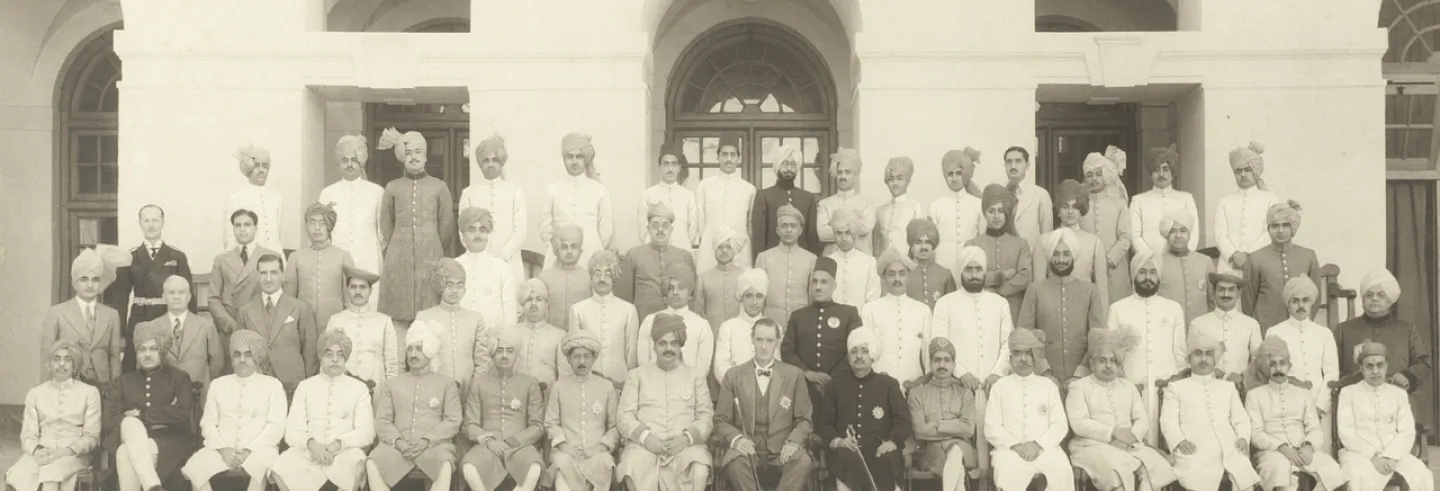Writing to Queen Victoria after the Delhi Durbar of 1877 — the event at which the lady was proclaimed empress of India — the British viceroy informed her of a declaration of loyalty from a leading ‘native’ prince. The maharajah of Indore, wrote Lord Lytton, had remarked to him how India was "a vast heap of stones, some of them big, some of them small." That is, it had no unity, no order, and was a right royal mess. Thanks to the Raj, however, at last "the house is built, and from roof to basement each stone of it is in the right place." It was a line ripe with loyalist grovelling, and its transmission to the queen was intended to flatter and reaffirm the might and (supposed) mission of her empire. But the statement also repeated a basic premise advertised by the Raj: that India’s princes and the British had an alliance of mutual interest.
Yet, there was more to things than the Indore maharajah’s remark admits, for the reality of British interactions with India’s ‘native’ rulers was more complex and at times adversarial. After all, the same maharajah was, without irony, described in confidential correspondence as a "Chief whose disloyalty" was "notorious" and who in "every possible manner" gave the Raj "persistent opposition." That is, even if his rhetoric were oily, his actions were a source of friction. Which is why once durbars and public announcements were out of the way, British officialdom recognised this ruler — Tukoji Rao Holkar II (1835–86) — for what he was: an independent-minded man, and the reverse of submissive and meek when it came to his overlords.
British interactions with India’s ‘native’ rulers was more complex and at times adversarial.
Holkar’s record of aggravating the Raj is colourful. As a young prince, during the 1857 revolt, while he declared himself for the British, his troops went with the rebels. Though it was claimed that the ruler had lost control of his soldiers, there was a not ungrounded suspicion that he was playing a double game. Then, in the 1860s, he annoyed the Raj by taking up the causes of Mysore and Dhar: states that faced threats of absorption into British India. By the next decade, Holkar was bolder, making a massive donation to the East India Association — an organisation founded by Dadabhai Naoroji to advocate India’s cause right under the queen’s nose in London. The maharajah lauded its "patriotic exertions" in "promoting the true interests" of Indians.
Holkar’s reputation as a difficult prince, therefore, preceded him. One newspaper complained that when Victoria’s son visited Indore in 1875, the maharajah’s reception was not of a "special character" with "no display or gorgeously decked elephants" — the opposite of what the Raj expected on such occasions. Another decried the man’s "swagger" and the fact that he was "lost in his own greatness," with little dignity but plenty of "pride and self appreciation." And yet it was difficult for the Raj to bully him. Indore’s revenues grew steadily in his reign: the maharajah had invested in the railways and modern projects such as a cotton mill. While every inch an autocrat, he was not inefficient. So even if Holkar created "on all sides" an "unfavourable impression," he was able to protect his turf and keep the British at bay.
Complex regimes
Tukoji Rao Holkar belongs to a world that is poorly understood today. Indian princes and their states, when evoked now, are the stuff of overstated romance or sneering disdain, if not a compound of both. Entertainment they were certainly capable of providing. Writing in 1931, a critic noted how an official princely conclave also gave de facto competition to the New York Automobile Show. If one maharajah flaunted a car with trendy security features, another showed up with a car installed with the kind of searchlights that usually sat on warships. Even personal eccentricities made the maharajahs founts for transregional gossip. One thought himself an incarnation of Vishnu, while another believed he was Louis XIV of France reborn among Punjabis. The last nizam of Hyderabad owned truckloads of gems but was also a miser who salvaged smokes from stubbed out cigarettes.
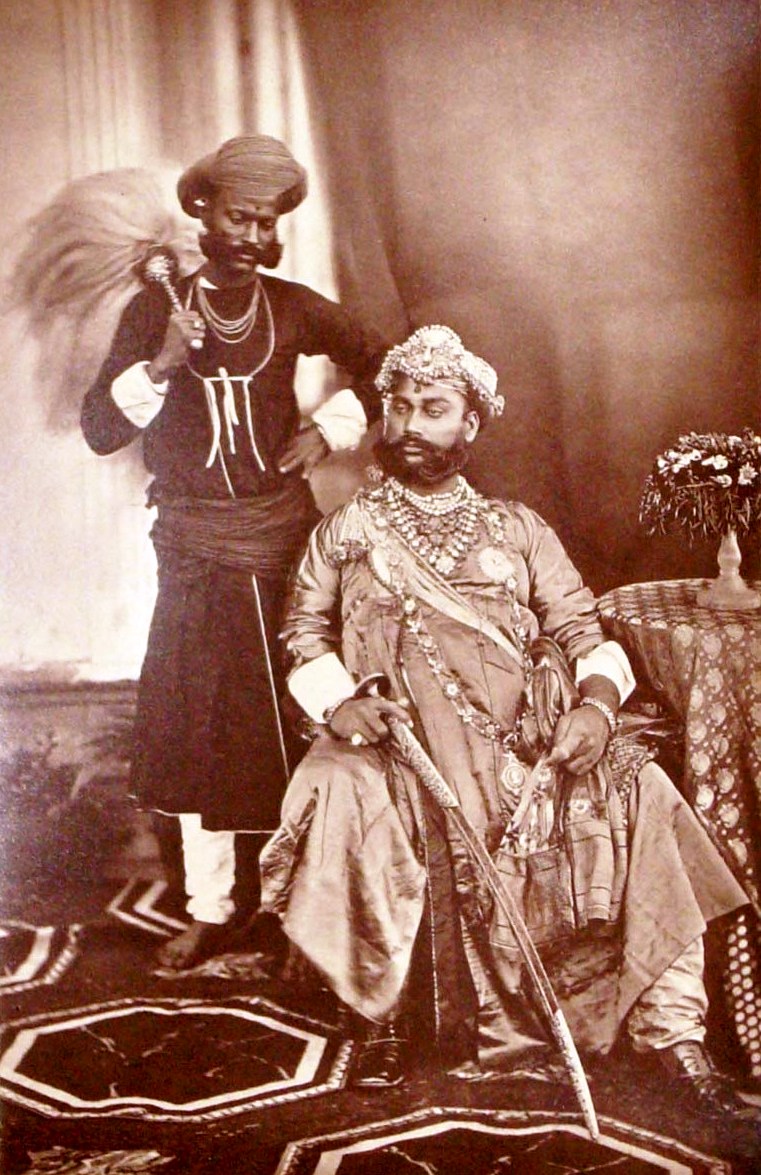
But as with stereotypes generally, while there was a measure of truth to this talk of excess, its circulation also served more insidious purposes. For the British, it conveniently infantilised Indian rulers and cemented the claim that natives were simply incapable of serious government. India’s traditional leaders were no good, except for frivolous sex and fancy dress, thus justifying stern, manly imperial supervision. Similarly, for a younger crop of nationalists, animated by democratic ideals, silken autocracy was a relic of feudal yesterdays. The princes were British proxies, who cast their lot with the wrong side of history, deserving little sympathy. Particularly in the closing stages of the freedom struggle, they had tended towards repression. As Jawaharlal Nehru put it in the 1930s, "Indian rulers and their ministers have spoken and acted increasingly in the approved fascist manner." It did not help, as far as the Congress was concerned, that the Hindu Mahasabha found welcome in the states.
The British were the stronger party, but the maharajahs also proved able to manipulate the system and resist colonial penetration.
As with most things pertaining to the past, however, the story of the princely states is also vastly more complex than simplistic readings suggest. To begin with, there was their physical reach. Together the maharajahs controlled two-fifths of subcontinental territory, and a quarter of its population. Most discussions of ‘Indian history’, however, restrict themselves to British-ruled India, excluding this slice of Indian-ruled India. It is an approach that eclipses the experience of imperialism for millions who resided in the states, and their political evolution. In economic terms too, though the states included India’s more industrially and educationally forward provinces like Mysore and Cochin, they attract scant notice. Even conceptually, the princely states are handicapped, described as being subject to ‘indirect rule’, that is, a system where token princes preserved a facade while the strings were pulled by white puppeteers. The fact, however, is that the Raj’s equation with the princes was one of constant negotiation and unending suspicion. The British were the stronger party, but the maharajahs also proved able to manipulate the system and resist colonial penetration.
What the states deserve, then, is a more sophisticated approach and a more prominent place in general imagination. Even allowing the charge that they were nothing more than ‘pillars of the empire’, as is often alleged, the fact is that each pillar was of different design, and each had a unique story. Every major princely realm presents a historically dissimilar experience, and in any larger understanding of India, their incorporation is not just helpful but indispensable. The Maratha rulers of Gwalior, for instance, whose ancestors conquered territories dominated by others till the mid-18th century, faced different challenges as compared with the Rajput royalty, whose princely legitimacy went back a dozen generations. In terms of political structure too, the states offer variety. The larger the territory controlled by a ‘native chief’, greater were the factors in play, and more intricate its internal politics. Of 562 states, nearly 60% were spread over about 6,500 square miles of territory in western and central India, making them microscopic estates rather than kingdoms. On the other hand, 108 principalities with tens of millions of subjects covered well over 500,000 square miles — these were the states that truly deserve that term.
The princely states, then, can help shed light on various historical and political processes, some of which, in the realms of religion and caste, still resonate in Indian society.
Hyderabad, for example, had a complex "multiethnic and multitiered political system" within its bounds. Its Muslim nizams had arrived here as Mughal representatives in the 18th century, but local Hindu powers who paid them homage had been around for ages. Just as the British managed a system of ‘indirect rule’ with the maharajahs, many maharajahs in turn had similar internal arrangements with lower levels of indigenous authority. Some of these vassals of the nizam traced their genealogies back to the Kakatiya period in the 14th century, in fact, showing fascinating political continuity. All this was alien, meanwhile, to bureaucratised Travancore, which ultimately faced a communist uprising; Baroda, whose politics was in great measure defined by the existence of a Maratha elite ruling over Gujarati subjects; or even little Pudukkottai, whose Kallar (‘robber caste’) rulers faced pressures as much to modernise as to Brahminise. The princely states, then, can help shed light on various historical and political processes, some of which, in the realms of religion and caste, still resonate in Indian society.
Behind the pomp and the ritual
To simply dismiss the princely states as unworthy of historical interrogation, then blurs intelligent perception. The cartoon idea presents maharajahs as British clients, lost in sexual escapades while leeching off a weeping peasantry. It did not help that colonial narratives encouraged such disdain to sustain imperial interests. The maharajahs were presented by the Raj through a prism of expedience, as blingy tools for outsourced administrative labour. Lord Canning, the British crown’s first viceroy, for instance, labelled the states as "royal instruments" for the empire’s security. While they were not incorrect, there was more to the states than partisan packaging. For the maharajahs also transformed the Raj, and in negotiations with the princes, imperial authorities revealed their own vulnerabilities. One Victorian functionary asserted loudly, thus, that the "supremacy of the British Government is not derived [...] from any power inherited from the Moguls." And yet flashy durbars orchestrated by successive viceroys were patently about reclaiming Mughal rituals to fortify British standing. Lining up maharajahs now in processions, bestowing titles and insisting on public fealty were exercises not just in projecting might, but also in seeking a legitimacy the Raj feared it did not possess.
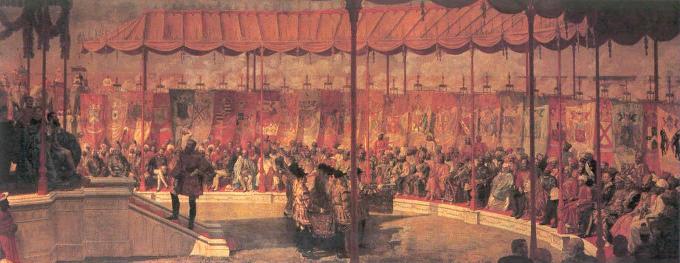
Indeed, while the maharajahs were weak in physical strength, their cultural stature was not inconsiderable. As one scholar put it, people "conceived of politics [itself] in terms of rajas and ranis, padishahs and begums," which allowed Indian royalty to subtly remind the British of their foreignness. The princely alliance with the Raj was a constantly readjusting transaction. Holkar, whom we encountered earlier, was particularly good at this. Indore was willing to flatter the British so long as they did not interfere. "Treaty rights," the maharajah explained, "should always receive the most careful consideration," which was his way of telling the viceroy to mind his business. Nothing vexed the Raj more than maharajahs deploying Western legalisms like this. So much so that as late as 1926, a viceroy had to assert that British supremacy "exists quite independently" of treaties, and that "no Ruler of an Indian State can justifiably claim to negotiate with the British Government on an equal footing." What is instructive here is not the statement itself, but the fact that only two decades before the British withdrawal from India, supposedly servile princes needed such rebukes at all.
Subversion, in fact, was an inbuilt feature of the princely relationship with the British.
Similarly, much has been made of the princely propensity for pomp. As an administrator explained, "loss of much of their real power makes [the maharajahs] more anxious to preserve forms that yet remain of royalty" through overblown pageantry. In this view, ritualism was a sop for Indians divested of meaningful authority. In fact, however, the imperial power was just as keen to play this game. As early as the 18th century, their representatives in local courts clamoured for funds to keep up appearances. The Company’s Hyderabad man conveyed that it was essential he match up, "for the sake of some appearance of equality," with the nizam who had so many people entitled to ceremonial distinctions about him. The tables could be reversed too. Helping a prince of Indore win the throne in 1843, Lord Ellenborough got him to present 101 coins to his envoy. With that quiet act, the ruler did the British homage, admitting inferiority. By leading princes to their seats, determining how close the imperial agent’s chair was kept, and through other nitty-gritties, the Raj too conducted politics through ritual.
On the Indian side, meanwhile, as British power swelled, ritual offered a platform for princes to taunt their suzerains even when official language was sugary. In 1861 the nizam was created a member of the Order of the Star of India. While intended as an honour, it also meant acknowledging the queen’s supremacy, causing the man to avoid his investiture for as long as possible. When it could no longer be delayed, he refused to place the insignia around his neck, declaring it akin to a slave’s collar. It was not resistance by street protest or armed force — but within princely settings and its powerful world of symbols, it was a denial of legitimacy. Even trickery was not unprecedented. In 1877, another nizam went to Delhi, where his minister attempted to convey that Hyderabad was "equal in sovereignty" to the Raj even if "unequal in strength." When the viceroy asked for the nizam’s "loyalty" and "allegiance," the minister coolly rendered the chief words as "friendship" and "alliance." "My interpreter having noticed this, I corrected the intentional mistranslation," the viceroy hissed. These negotiations on wording and ritual, moreover, were not bursts of pique. As one scholar put it, "a slavishly subservient prince would have undercut his own legitimacy," making defiance, one way or another, imperative to his political dignity.
That in 1917 the princes were still described as "formidable" is revealing of the resources yet at their command.
Subversion, in fact, was an inbuilt feature of the princely relationship with the British, though the extent to which it could be attempted depended on many factors, including the nature of their representative (generally called the resident) and the personality and pluck of each ruler. Indian princes often ventured, for example, to cloister British officers, preventing free intercourse with their court and refusing audiences. In the mid-19th century, the Hyderabad resident, for instance, complained that he was "purposely kept" in isolation from local "men of rank and eminence." Decades later, in 1922, a successor gloomily repeated how he "had not even been allowed a confidential conversation of five minutes" with the nizam. Other techniques of manipulation were also used. Rulers in Lucknow, Jaipur and Hyderabad seduced residents, giving bribes, employing their illegitimate offspring, and even greasing the palms of Indian aides. In 1841 when told that approval was mandatory for ministerial appointees, one maharajah promptly declared his intention to rule sans minister. Fudging accounts was another option. As late as 1906 the British were ruing "scanty information" about Jaipur’s finances, for example, as its rulers for decades hid millions of rupees of their revenues from imperial eyes, by this avoiding paying a higher tribute.
Over time, the princes were able to extract even harder forms of power from their suzerains. Military matters are a case in point. As Britain’s geopolitical contest with Russia (‘The Great Game’) gained pace in the closing decades of the 19th century, the maharajahs’ armies – totalling 3,14,000 troops – suddenly looked appealing. Till 1879 the policy was to limit their access to technology and weaponry, so as to reduce princely forces to an unthreatening gaggle. And, yet, in the end, ever-growing reliance was vested in them. Princely troops served in places as far away as Africa, Afghanistan, and China. In the First World War, 15% of Punjabi enlistees in the British-Indian army came from the states. Rajput principalities contributed 48,611 combatants, while Patiala provided 26,648 fighters. The Bikaner maharajah was the only Indian signatory to the Treaty of Versailles alongside such figures as the United States president. The princes by this time were also starting to lobby together, sending a shiver down colonial spines. As an official warned, "The Native States, taken singly, cannot give us serious trouble, but by encouraging them to form themselves into a sort of trade union, we are calling into existence a formidable power which will most certainly be used to bring pressure to bear." That in 1917 the princes were still described as "formidable" is revealing of the resources yet at their command.
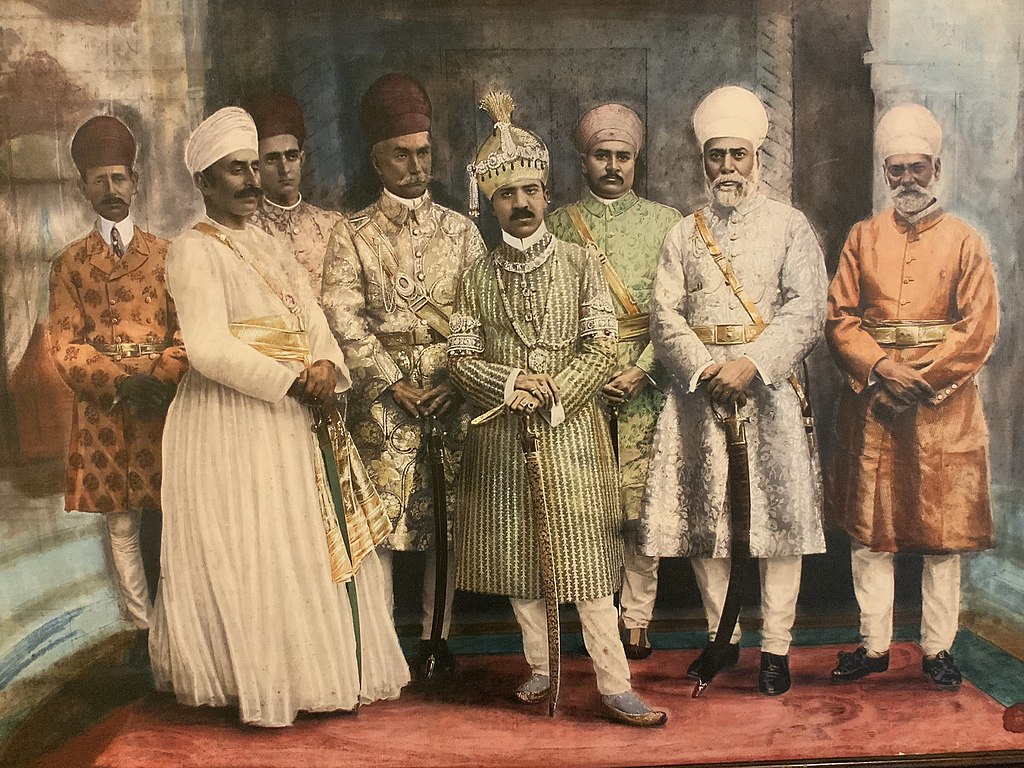
The fact is that at the dawn of the 20th century, sounds from the states were aggravating the Raj as much as nationalist clamour under the Congress. The British had no option but to respond to this pressure. On the princely side there was logic to this growing ambition. As a ruler stated, "We do not wish to become mere puppets." Before the Imperial War Conference, the Bikaner maharajah also expressed hopes that Britain would not forget the "just claims and aspirations of India" after the war — a lot like Mahatma Gandhi expected concessions in the post-war period as a reward for nationalist cooperation. Indeed, Bikaner even asked for a categorical declaration that "self-government within the British Empire is the object and goal of British rule." Ominously, he envisioned native royalty working in a "complementary" fashion with the "democratic element in British India." Naturally, the establishment was nervous – while they were cultivating princes as a counter to the Congress, here was free talk of cooperation. While princes might be used against nationalists, a coalition of the two was dangerous.
In the end, then, the downfall of the princes was not due to the British but their own hesitation to move with the times.
However, despite this discomfort about involving princes in British-Indian matters, there were moments where the Raj had to condone exactly that. In the mid-1910s, for example, when the government wished to construct irrigation works on the sacred Ganga, they encountered opposition from Madan Mohan Malaviya, a Congressman and staunch Hindu. It took princely mediation to find a compromise, with the Raj carting to the negotiating table Maratha, Rajput, Sikh, and Brahmin royalty to persuade the politician to give way. Such cultural value could also be requisitioned in international matters. So, when the Ottoman empire entered the First World War, the British requested Hyderabad’s nizam —the last great symbol of Mughal glory—to ask Indian Muslims to remain loyal to them, as opposed to the Ottoman sultan, who was also the caliph of Islam. To be clear, the nizam was not permitting himself to be exploited. He had his own interests, which when they were not met, saw him roll back assistance: a few years later, the same man was funding a conference on the restoration of the Caliphate. He was a notoriously bad ruler and sitting on a tinderbox of religious polarisation. Yet the British dared not depose him: the nizam was too important, a viceroy qualifying the man as "the spokesman and leader of Mahomedans in India."
Blind to the approaching revolution
In the end, then, the downfall of the princes was not due to the British but their own hesitation to move with the times. By the second decade of the 20th century, the Raj was forced to respond to nationalist aspirations, but few maharajahs understood that they too would need to shift gears. The rulers also failed at coordination, even if only to protect their interests. The viceroy in the 1920s had created a Chamber of Princes, but the body was handicapped: Rajput rajahs sneered at Maratha royalty, while rulers like the nizam were aghast at sitting on an equality with princelings of either kind. In some ways, the rulers were still in an India that was a loose patchwork of entities rather than a nation. So, in the inter-war period, when viceroys increasingly held back from interference, Indian royalty utilised this room for manoeuvre not to reinvent themselves, but to resurrect autocratic rule.
Looking back from the present, though, with the states meticulously ignored in narratives of the period, it is in fact startling how even in the 1930s the maharajahs possessed opportunities to carve out a future in postcolonial India. They were invited to the Round Table Conferences, and while Congressmen like Nehru were cold, Gandhi was more circumspect. In a sense, the Mahatma, whose religiosity influenced his politics and who manifested a distinct conservatism, respected the cultural weight of the princes. He was, besides, born a princely subject, in a family with a history of royal service. Pressed into taking steps for Indian self-government, the British proposed a federal structure, with elected provincial governments as well as a national centre with a place for the states. In what would prove to be their undoing, however, the maharajahs failed to rise to the occasion. While some welcomed new equations, the majority was lost in myopia. They prevaricated on a settlement so that by the late 1930s, when the Congress was forming ministries in British provinces, the princes were consumed by trivialities. An official had succinctly captured the consequences of this attitude well in advance: "British India is advancing along the lines of Evolution," he noted, while "the Indian States are on the road to Revolution."
Assorted maharajahs donated generously to the [Congress] in its infancy.
Revolution it was. With the outbreak of the Second World War, the federation option was discarded. Congressmen resigned from government and were again on the streets and then in jail. While the states made remarkable contributions — financially and in military terms — to the war on fascism, when it ended, they found they were no longer partners at the negotiating table. Circumstances had altered, and there was little sympathy for princely grievances, which looked vulgar against such catastrophes as Partition. In the late 1940s, with the world transformed, the maharajahs were presented a fait accompli: they would hereafter be tolerated, not entertained as equals. With the Raj set to terminate, the fate of the maharajahs came to rest with the Congress. Where in the 1930s they had still had room to delay, now Sardar Patel towered over them with a dotted line on which to sign, wielding both carrot and stick. Most submitted quietly in a pall of gloom. With Hyderabad, however, the Indian government did not hesitate to launch a full-scale invasion, which included aerial bombing. Though played down through a more sedate term, the seriousness of the affair comes through in the suppression of an official report, which estimated that 27,000–40,000 people were killed "during and after" the so-called "police action." When the British left, then, the face-off between the Congress and the maharajahs featured blood and violence.
It was a strange gravestone for royal India, given its larger history. But the even greater irony is that the Congress and princes had originally been friends.
Working with the national movement
Writing in 1928, one of Curzon’s aides recalled how in the early 20th century, it was entirely in order for politically conscious Indians in British territory to be in awe of their royal countrymen. "I often watched," the man recalled, as maharajahs "visited British India, and the profound respect and reverence" they commanded among "the leading citizens of the various capitals." Many of these progressives were "free and easy" in English society. Yet, "in the presence of a real Raja" their "manner and attitude changed," and they became "humble and deferential." The official need not have been surprised, because he had already answered why the princes inspired veneration. Turning Curzon in his grave, his ex-secretary wrote: "I regard the average Indian State as better suited to the happiness and temperament of the Indian than the huge unwieldy" British system. The native principality was more able to "bring content and opportunities to the people" than the imperial bureaucracy. Yet another officer observed that where the princes were one up on the Raj was in their "claim on the general regard of the people." The idea of a maharajah, he believed, "strikes [the Indian] imagination," in a way impossible for the file-bearing civil servant.
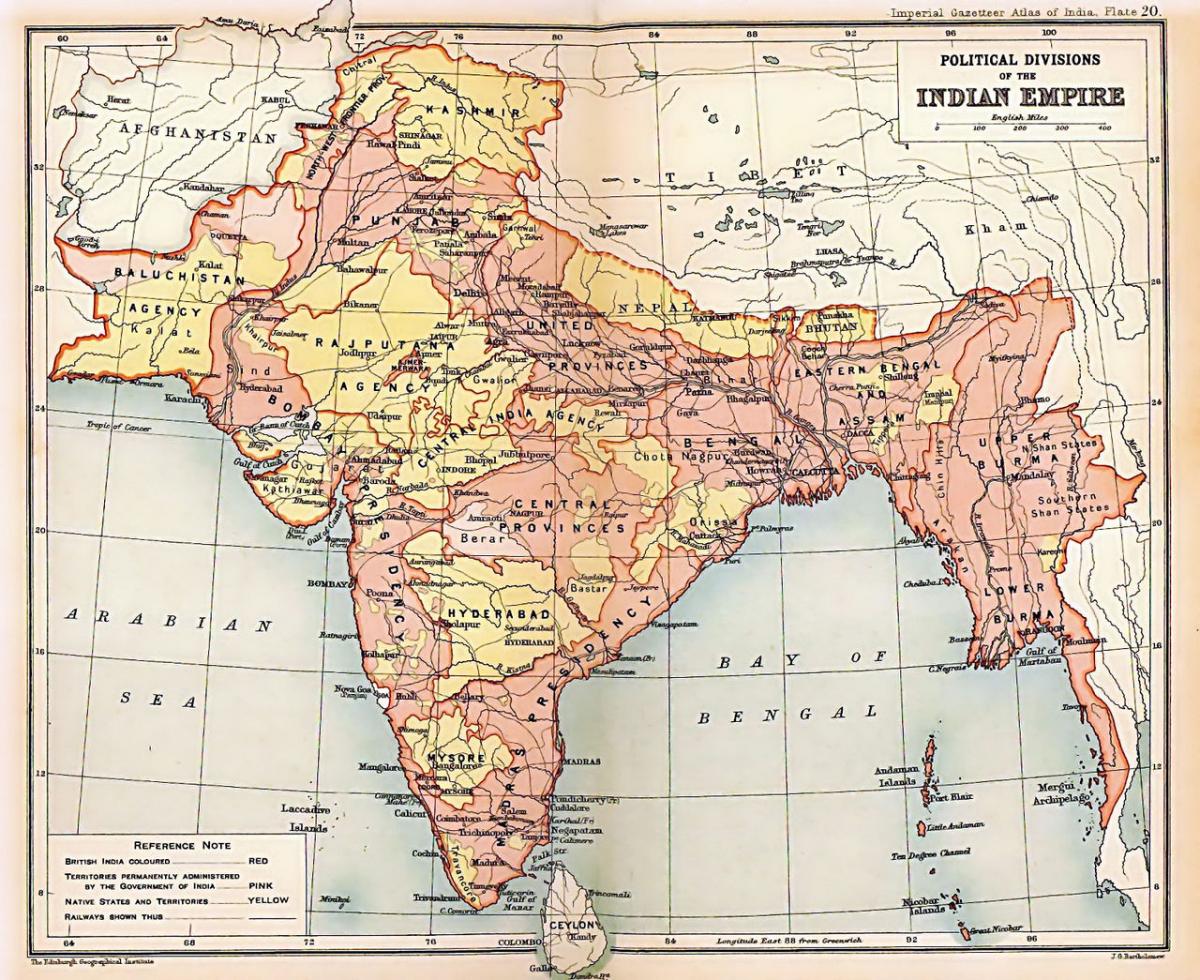
Among those so struck, curiously enough, were founders of the Congress. To some extent their love was born of economics, for assorted maharajahs donated generously to the organization in its infancy. This included rulers such as of Baroda and Travancore as well as zamindars from Ramnad and Bobbili. Princely largesse, in fact, was showered so readily that it provoked alarm in imperial circles. In 1887 Mysore was asked to cease making contributions. Of course, orders were not meekly obeyed: 12 years later the viceroy, interrogating the maharajah of Baroda, discovered that the latter was still giving to the Congress, while more than one ruler financed the election of a Congressman to the House of Commons in London. In fact, princely patronage was extended to regional nationalist clubs too. The Poona Sarvajanik Sabha in the Bombay Presidency, for example, full of "men with tainted views," was funded not only by local rulers but also by southern maharajahs; the Deccan Education Society, which ran an institution attractive to gun-wielding revolutionaries, obtained in excess of 2 lakh rupees in princely gifts in its maiden 25 years of existence. Curzon, in fact, was convinced as late as 1925 that there were a "number of Philippe Égalités" [after a Bourbon prince who supported the French Revolution] among the rajahs, with an "ardent sympathy" for democracy.
The maharajahs may not have been mass leaders, but this should not blind us to their achievements.
Despite their eventual falling out, in the period between the 1870s and the first decades of the 20th century Indian nationalists endorsed the maharajahs. Indeed, many rulers were seen as nationalists, and several nationalists saw the states as rallying points in their fight against colonialism. As a historian of the Congress tells, at this juncture the party was "less interested in whether chiefs lived up to the representative and liberal political principles" they espoused; irrespective of whether a ruler were good or bad, the Congress’s chief concern was whether "the British honoured the independence of the states." Territories under native control were spared the worst of imperialism, and both prestige and sentiment were tied to their survival. While many Congressmen did feel that absolutism would need to be jettisoned, it was Indian initiative, they urged, not foreign interference. To these nationalists, in fact, princes had a role even in a democratic future. Mahadeo Govind Ranade (1842–1901), a Congress founder, visualised the Indian parliament as featuring an elected council resembling the Commons, with rulers constituting a corresponding House of Lords. At this point, the right of the maharajahs to also speak for India was not questioned.
There were other interactions too between nationalists and the states. In 1916, a Congress president praised rulers for rewarding Indian administrative talent with positions of authority. While brown men wasted away in minor posts in British India due to racial prejudice, in the states they found the platforms they deserved. Indeed, this last point firmly punctured colonial biases. Belief that Indians were horrendously bad at governance dominated the highest echelons of the Raj. When in 1892, as alluded to before, a Congressman won election to the British parliament, the governor of Bombay unleashed a jaundiced pen. "I am very disgusted at Dadabhai Naoroji getting elected to the House," said Lord Harris. "Why England should elect natives I can’t for the life of me see: they can’t govern themselves. Why should they govern us?" It was with relish, then, that nationalists highlighted the achievements of administrators in princely India, who established standards often superior to British rule – men like Seshiah Sastri, Dinkar Rao, and Madhava Rao, to name a few. Or as the administrator and historian K.M. Panikkar argued, the princes helped develop "a school for Indian statesmanship" and "offered fields for men of capacity" whose complexion had placed a limit on what they could achieve in foreign-ruled parts of their own motherland.
Several of the statesmen — who would in time be associated with the Congress — began as British clerks but rose under maharajahs to pan-Indian prominence. They thought of politics and constitutions, of governance and development, and ultimately of beating the British at their own rigged game of ‘progress’. Some became active spokespersons for nationalism. Naoroji, before making history as a British parliamentarian, was a princely minister. Others worked more discreetly. But they all rose to the challenge of imperialism, reflecting on questions about their own identity. The princes were part of this shared feeling. In stressing autonomy, in improving their systems and in supporting Indian aspirations, they stood up to their colonial bosses. Politics was a triangular contest between the Raj, princes, and anglicised statesmen. This was precisely why the understandings they reached were specific to this context. They do not fit later trends when the masses entered the picture. Congress and the maharajahs grew to view one another as antagonists. That is, the Congress of the 1890s differed from its 1940s’ avatar, just as 19th century princes were not like their 20th century heirs. While the final assessment of princely India draws from this last, troubled phase, the earlier is not without significance.
Conclusions
All in all, princes and statesmen were both part of India’s evolution in the colonial period. The maharajahs may not have been mass leaders, but this should not blind us to their achievements. When Tukoji Rao Holkar urged younger rulers as in Baroda to stand up to British pressures; when he refused to bring out elephants and give the British heir apparent an ‘exotic’ experience; and when he funded nationalist clubs and known critics of the Raj, his actions were very much a part of resistance to imperial pressures. To view Indian-ruled India just as a circus of the absurd on the margins of British India, then, hardly furthers the cause of unravelling such complexities, and the country’s many-layered colonial experience. For in the end, resistance to British imperialism took multiple avatars – often in unusual places, in ways that were both deceptive and ingenious.


